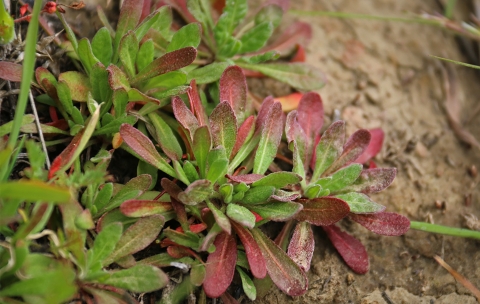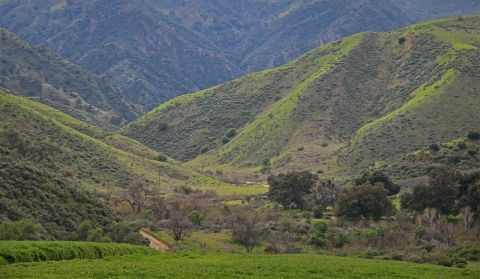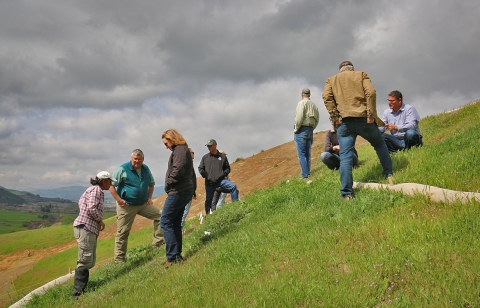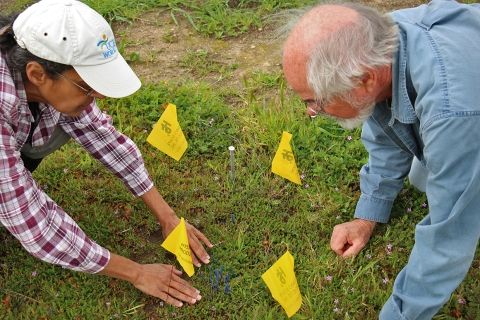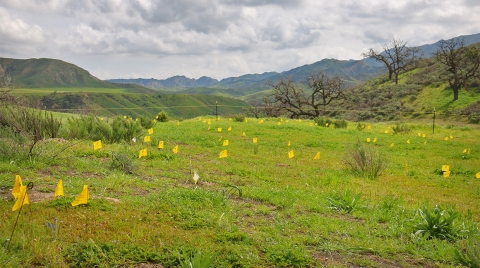By Ashley McConnell
The San Fernando Valley spineflower, once believed extinct, is now flourishing in the hills above the Santa Clarita Valley in Los Angeles County.
Botanists planted seeds of the tiny buckwheat as part of a multi-year effort that kicked off this past December to re-establish the plant across its historic range. After abundant rainfall, those seedlings are now growing in the thousands across eight sites in the county.
“It’s pretty exciting for this first year of introductions to be such a success,” says Cat Darst, assistant field supervisor of the U.S. Fish and Wildlife Service’s office in Ventura. “This tells us this can work.”
In 2017, the Service signed an agreement with FivePoint Holdings, the landowner of Newhall Ranch, to ensure the San Fernando Valley spineflower would continue to grow in its native habitat while plans are underway to build a 21,500-home master-planned community which will add an estimated 75,000 permanent jobs to the area.
The robust Candidate Conservation Agreement outlines plans to establish plants in new and existing sites and manage the species long-term, while conserving more than 1,500 acres within Los Angeles and Ventura counties to support spineflower conservation.
As a result of these proactive conservation measures, the plant, once considered a candidate for listing under the Endangered Species Act, is no longer at risk.
“This is really astonishing,” said Anuja Parikh, a botanist with FLx Consulting, as she observed thousands of tiny San Fernando Valley spineflower plants at one of the introduction sites this March. “It’s been a good year with a lot of rainfall and germination. Hopefully next year we’ll get good rain again.”
Parikh and her husband Nathan Gale were among the first to rediscover the San Fernando Valley spineflower in Los Angeles County in 2000, and have been working as botanists on the ranch for nearly two decades. They are part of a team that has developed a plan to protect and conserve the San Fernando Valley spineflower into the future.
FivePoint has dedicated more than $8 million to fund the establishment of the spineflower and long-term conservation and management of the new sites, as well as $10 million in habitat enhancements and endowments for long-term management efforts of existing populations.
The U.S. Fish and Wildlife Service will continue to evaluate implementation and effectiveness of conservation measures over the next 10 years.

